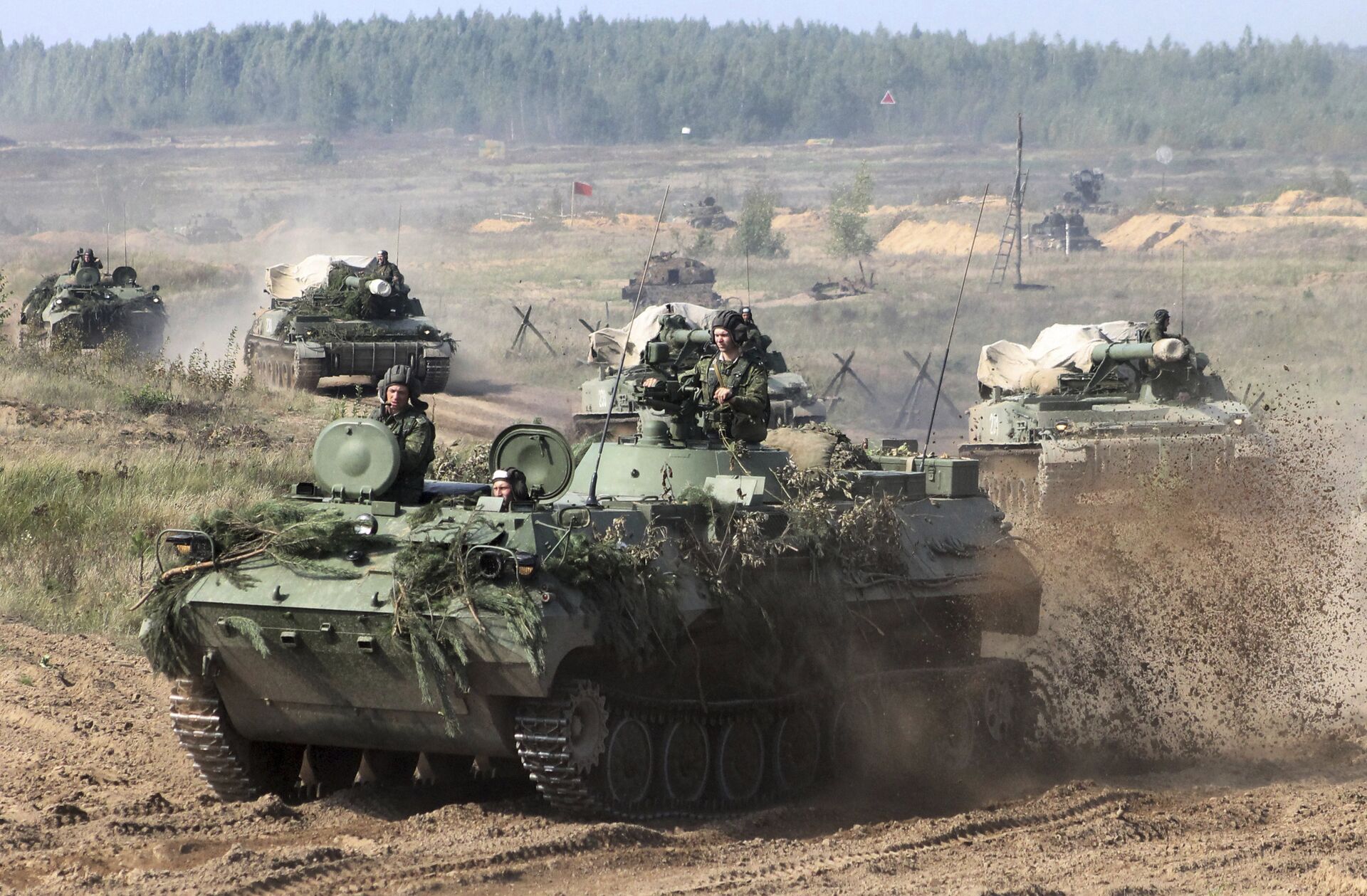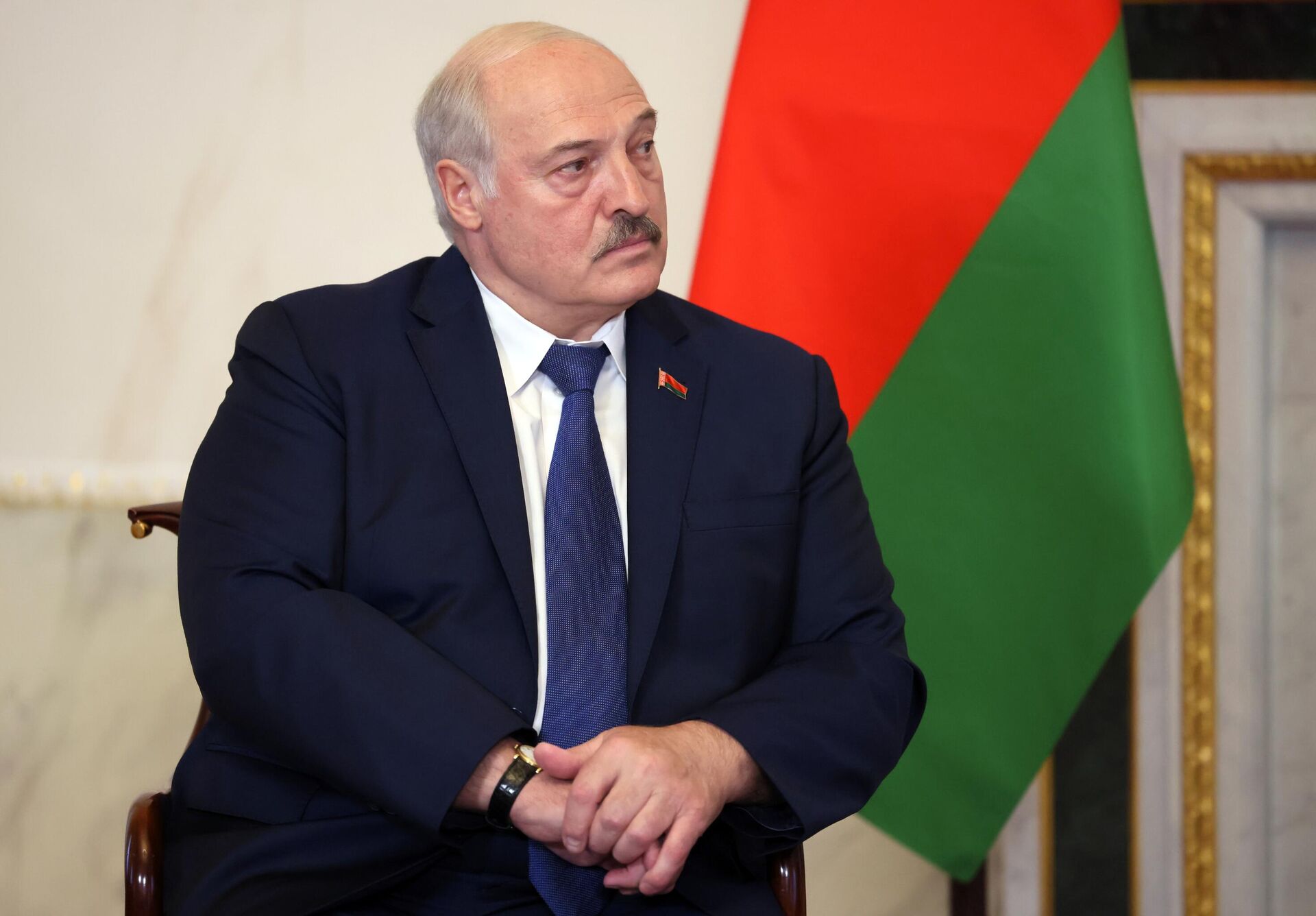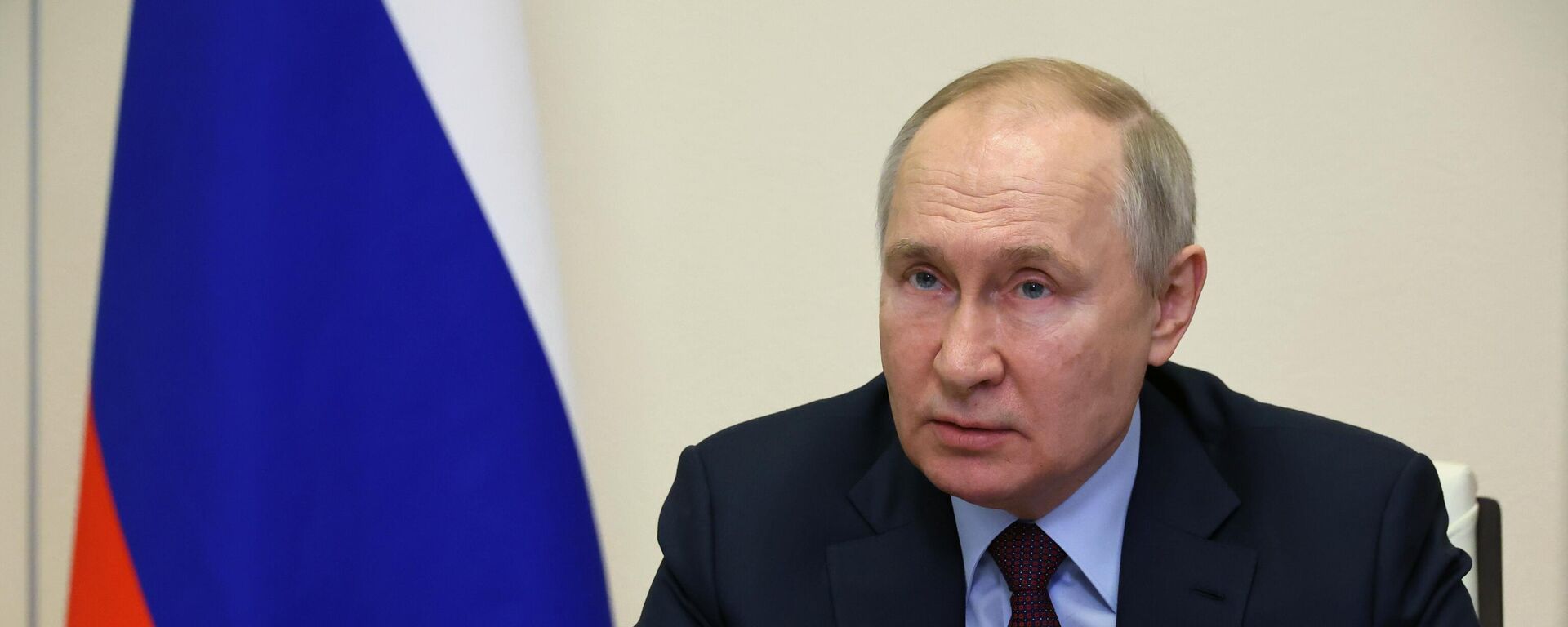Why Does Belarus Support Russia?
14:00 GMT 28.03.2023 (Updated: 10:50 GMT 06.04.2023)

© Sputnik / Ramil Sitdikov
/ Subscribe
Vladimir Putin revealed on Sunday that Moscow and Minsk had agreed in principle that Russia would be able to deploy tactical nuclear weapons on Belarusian territory. The Russian president cited his counterpart as saying, "listen, we are your closest allies. Why do the Americans place nukes on their allies' territory?"
As the West continues to funnel military equipment to the Kiev regime for its proxy war against Russia, and amid the UK's announcement of plans to send depleted uranium munitions to Ukraine, Russian President Vladimir Putin revealed an agreement, in principle, between Moscow and Minsk, on the deployment of tactical nuclear weapons on Belarusian territory.
The remarks, which were made in an interview for a Russian broadcaster on March 26, unleashed a furious response from Ukraine and its benefactors. Russia was accused of making Belarus a "nuclear hostage."
But were is Belarus located, and why is it helping Russia? Sputnik has the answer.
Where is Belarus Located?
The Republic of Belarus is situated in the center of Europe. It shares common borders with five states: Russia, Ukraine, Poland, Lithuania, and Latvia. The country's territory spans an area of about 207,600 square kilometers.
While Belarus cannot boast access to the sea, its geographical location is such that it can aspire to be an important trade and transport corridor between Europe and countries of the Commonwealth of Independent States (CIS).
The regional intergovernmental organization was formed following the collapse of the Soviet Union in 1991. Belarus is located at the intersection of the trans-European transport and communication corridors, "West-East" and "North-South."
How Far is Kiev From Belarus Border?
The distance between Kiev, the capital of Ukraine, and the Belarusian border is 383 km.
What Language Do They Speak in Belarus?
Both Belarusian and Russian are the state languages of the Republic of Belarus. Other languages, such as Ukrainian and Polish, have also long been used on the local community level.
Religion-wise, about two-fifths of the population adheres to Eastern Orthodoxy.

Independence square. Minsk, Belarus
© Photo : Hanna Zelenko
What is the Capital of Belarus?
Minsk, the capital of Belarus, is located at the very center of the country. The first written mention of the city dates back to 1067 AD. During its history, Minsk was destroyed and rebuilt dozens of times, and suffered particular devastation during World War II, referred to in Russia and Belarus as the Great Patriotic War. Today, Minsk is a modern European city, boasting its own underground metro service, launched in 1984. Its population is close to two million people.
What Was Belarus Called Before?
When the country now known as Belarus became a part of the USSR, it received the name of Byelorussian Soviet Socialist Republic (BSSR, or Byelorussian SSR). After the collapse of the USSR in 1991, it declared independence and took the name of the Republic of Belarus on August 25.
After the Soviet Union ceased to exist, Belarus spent a few years as a parliamentary republic, until a presidential form of government was introduced, with the first presidential election set for July 10, 1994.
Why is Belarus Known as White Russia?
In the distant past, lands attributed to Rus', the Eastern Slavic historical territories and peoples, were awarded various epithets. One of these was Belaya Rus', or White Rus'. This epithet is now an inherent part of the name of the sovereign state of Belarus. There is no exact clarity in reference books as to its origins. One of the existing theories suggests the term denoted the Russian lands that did not depend on either the Mongols or the Lithuanian feudal lords. According to the second, the name is due to the dominant color of clothing and hair of local residents. Both hypotheses, not supported by facts, are highly questionable. At the same time, it is quite possible to understand why this color designation turned out to be associated specifically with Western Russia, if we consider its use in chronological order.
Who is the President of Belarus?
The Republic of Belarus is a presidential republic, and by nature of its economic policy is characterized as a "socially oriented" state. The main law of Belarus is the Constitution of 1994.
Alexander Lukashenko, the first president of the Republic of Belarus, was born on August 30, 1954. On July 10, 1994, Lukashenko was elected President of the Republic of Belarus. He was subsequently reelected on September 9, 2001, March 19, 2006, December 19, 2010, October 11, 2015, and 9 August 2020. Lukashenko boasts the nickname of “Batka” ("father" in Belarusian).
How Large is the Belarusian Army?
The Armed Forces of the Republic of Belarus consist of the Ground Forces, the Air Force, and Air Defense Forces. Belarus has no navy, as it is a landlocked country. Today, the Belarusian Armed Forces number some 45,000 troops. Most soldiers in the Belarusian military are conscripts serving for a period of 18 months. The Belarusian Army ranked in 60th place of the 145 countries considered for the annual GFP review by the analytical company Global Firepower.
The Belarusian Armed Forces, as of January 2021, boasted over 1,200 T-72 tanks of various modifications. There are also more than 2,000 combat vehicles, including over 400 armored personnel carriers, and about 1,300 infantry fighting vehicles. Aviation is represented by Su-30SM and MiG-29 multipurpose fighters of various modifications, Su-25 attack aircraft, Yak-130 combat training vehicles, as well as Il-76 and An-26 military transport planes. Air defense systems are represented by S-300, Tor-M2E, Strela, Bug, and Osa anti-aircraft missile systems.

In this photo taken on Monday, Sept. 11, 2017, Belarusian army vehicles drive preparing for war games at an undisclosed location in Belarus
© AP Photo / Vayar Military Agency
Why are Russian Troops in Belarus?
Relations between Belarus and Russia are of a strategic nature, built within the framework of the Treaty on the Establishment of the Union State, signed on December 8, 1999. Since September 2022, the Air Force and Air Defense units of Belarus have jointly with Russian Air Force and Air Defense units been safeguarding the air borders of the Union State amid the ongoing proxy war unleashed by the collective West against Moscow in Ukraine. Two centers for joint combat training of the Air Force and Air Defense Forces have been opened in Belarus, while on October 10, President Lukashenko announced the creation of a Regional Group of Forces based on the Belarusian Armed Forces.
Why Does Belarus Like Russia?
Before World War I, Belarusian lands were a part of the Russian Empire. Amid the ensuing twists and turns of history, which involved Belarus becoming a part of the Soviet Union in 1922 as the smallest of the three Slavic republics (the larger two being Russia and Ukraine), the territory and its population at all times boasted close links with its eastern neighbor. Belarus became independent in 1991, after the dissolution of the Soviet Union. Belarus still looked to Russia as its largest and most important partner, both in political and economic terms. In 2021, trade turnover between the two amounted to USD 40.1 billion.

Russian and Belarusian tanks engaging in joint exercises at a range in Belarus. File photo.
© Sputnik / Courtesy of the Russian Defense Ministry's press service
/ What Percentage of Belarus is Ethnic Russian?
According to the National Statistical Committee, as of January 1, 2022, the population of Belarus was 9,255,524 people, which comprised 0.1% of the world's population and about 1.3% of the population of Europe. According to the 2019 census, Belarusians make up 85% of the national population, with the rest comprised of Russians, Poles, Ukrainians, Jews, and other nationalities. In Belarus, only around 15% of the residents consider themselves ethnic Russians. However, more than 80% of the country's citizens use Russian in almost all spheres of life.



